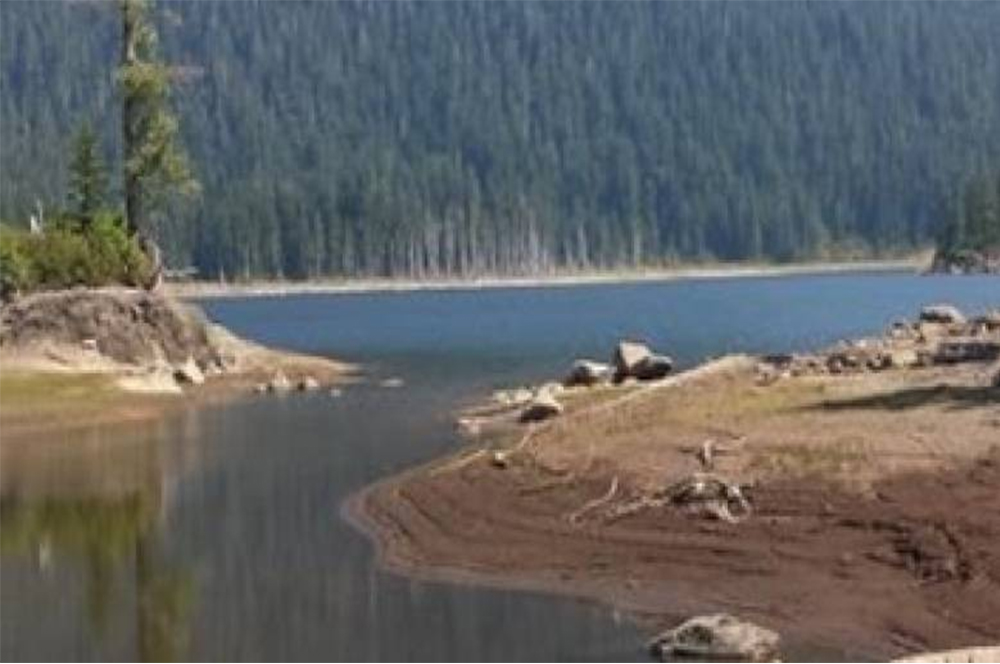What is the purpose of a provincial park? Does it exist solely to protect nature, or can it be used in other ways?
That's the question many are asking in the battle over Tetrahedron Provincial Park on the Sunshine Coast.
"B.C. Parks is trying to take a Class A provincial park and turn it into a watershed for the region, and that's not why this park was created," said Barry Janyk, the former mayor of Gibsons and the current executive director of the Federation of Mountain Clubs of B.C.
Janyk is one of a number of people fighting a plan by the Sunshine Coast Regional District to install a new pipeline to draw more water from a lake in the centre of the park.
Drought triggered changes
Chapman Lake has been the primary water source for the region since long before the provincial park was established in 1995.
But two droughts in the summer of 2015 and 2017 pushed the region into Stage 4 water restrictions, forcing the district to reassess its water supply, including how much water it draws out of Chapman Lake.
Following the first drought in 2015, the board of the SCRD voted to upgrade its ability to draw down the level of the lake — up to eight metres deeper — but only during extreme droughts.
Now the district wants to move forward with that plan, which requires replacing the existing system with a larger, deeper permanent pipeline.
And that requires either removing the entire park's Class A protected status that prohibits development or redrawing the park boundaries to remove Chapman Lake entirely from the park.
And that irks Janyk, who says there are better solutions to the region's summer water shortages.
One of his concerns is that blasting and trenching that would have to be done to install the deeper pipe.
"You do permanent damage for a temporary solution, and that's the fundamental problem," said Janyk.
"If they do that, its going to fundamentally ruin the park, and its not going to solve the long-term problem for the Sunshine Coast Regional District, which requires more and more water," said Janyk.
"It's ludicrous to encourage tourism to the Sunshine Coast and double the population, when you don't have the water resources to provide for them."
Protecting the local water supply
But others like SCRD Director Mark Lebbell say Chapman Lake was always intended to be the main water source for the region, even before the park was created in 1995 by the NDP.
At the time, many looked on the creation of the park as the best way to protect the watershed from logging.
But then-Liberal MLA Gordon Wilson raised concerns the region could lose control of its local water supply, because if it ever got Class A designation, the district would lose its ability to construct any new water management projects, just like the one being proposed now.
And that's why B.C. Parks is holding an open house on Wednesday, to give residents a closer look at the options.
But critics say there aren't enough options on the table, and what is needed is a townhall meeting to debate what those other options could be.
"There are alternatives that the regional district can pursue," said Janyk. "I'm very disappointed with the whole process. The public was only given five days notice. An open house is not a proper process for the significance of what is being proposed here."
CBC News reached out to B.C. Parks and the Ministry of the Environment for comment but did not get a response.
New reservoir proposed
Another alternative popular with opponents of the new pipeline is a new reservoir.
"It's not a shortage of water we have on the Sunshine Coast. It's an ability to store it," said Janyk, "That's the logical and most thoughtful way to use this $5 million that the district wants to spend to trench this lake."
But Lebbell says the ecological impacts of building a new reservoir would be worse than drawing more water from Chapman Lake.
"We don't know the location. We don't own the land. There are tectonic concerns," he says, adding the whole thing would have to be built from hundreds of tonnes of concrete and lined with polymers which could affect the water quality.
Lebbell says the district is already taking other steps to reduce water use, including switching to metered water by 2019. It's also looked at tapping in to aquifers, which Lebbel says are "notoriously difficult to monitor."
And despite all the other options, he still believes tapping deeper into Chapman Lake is the best way for the district to avert any future water crisis.

